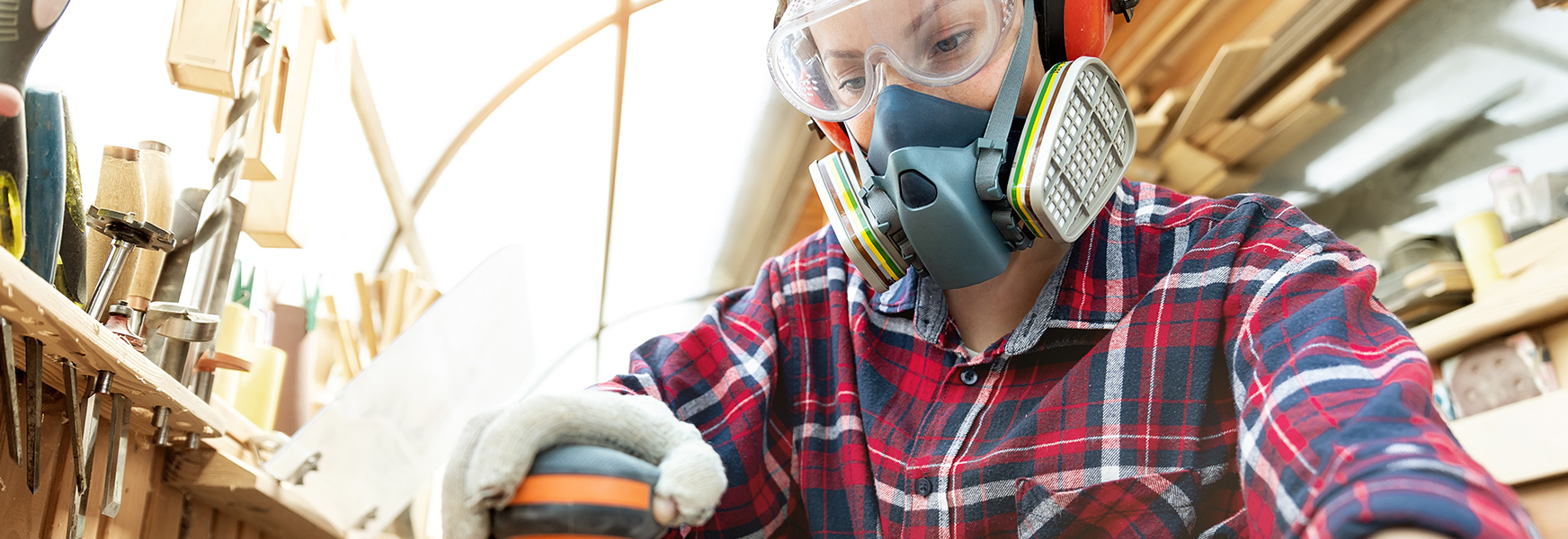DIY Safety - Do It Yourself, but Don’t Injure Yourself

With the ever-expanding collection of instructional videos available online, the modern DIY enthusiast has the ability to try their hand at almost any project. However, often the instructional videos that promise wonderful results in three simple steps are missing a particularly important step – how to complete the task safely! DIY projects can occur in various locations, including small businesses when tradesmen are difficult to schedule or when business owners want to decrease operating costs.
Before you jump into your next DIY project, whether it is at home or at the office, keep the following guidelines in mind when evaluating if you should call in the professional for assistance.
Read the Label
During many DIY projects, you will use products and materials such as paints, cleaners, or solvents that may be new to you. Even though you can buy it over the counter it doesn’t mean that it is inherently safe. By law, all products are required to provide the end user with safety precautions to take when using the product. Additional information can also be found on the Safety Data Sheet (SDS) that will either come with the product or can be obtained online. The information provided will include the type of personal protective equipment (PPE) to utilize and first aid measures to take should the product enter or come into contact with the body.
Invest in PPE
When you are making your hardware store shopping list, be sure to add PPE. A pair of safety glasses can not only save you a trip to the emergency room but can help save your sight for all of your future projects. Not all PPE is created equal and an upfront investment in good safety equipment can help keep you safe not only during the current project, but future projects as well. When selecting PPE be sure to select the PPE that has been certified by accredited organizations to meet American National Standards Institute (ANSI) or National Institute for Occupational Safety and Health (NIOSH) standards. Also, be aware that PPE has its limitations and does not make you invincible to the hazard.
Follow the Manual
Before you begin using any new equipment, read the instruction manual as it offers guidance on how to correctly use the equipment to keep the tool in good repair as well as safety statements for hazards the tool can create. In fact, manufacturers are required by law to provide these instructions to protect the end users. The US Consumer Product Safety Act (CPSA) was passed in 1972 with the intent to “protect the public against unreasonable risks of injury associated with consumer products” by establishing the US Consumer Product Safety Commission (CPSC). The CPSC maintains a website designed to educate consumers on potential hazards and provide information about recalls and product related injuries. If you receive your tools or equipment second hand and the manual is long gone, instruction manuals are readily available online on the manufacturer’s website.
With these safety tips in mind when you prepare for your next project, you should have the tools in your toolbox to do-it-yourself, but not injure yourself. For additional safety information, be sure to check out the many MEMIC safety resources available to our policyholders.

